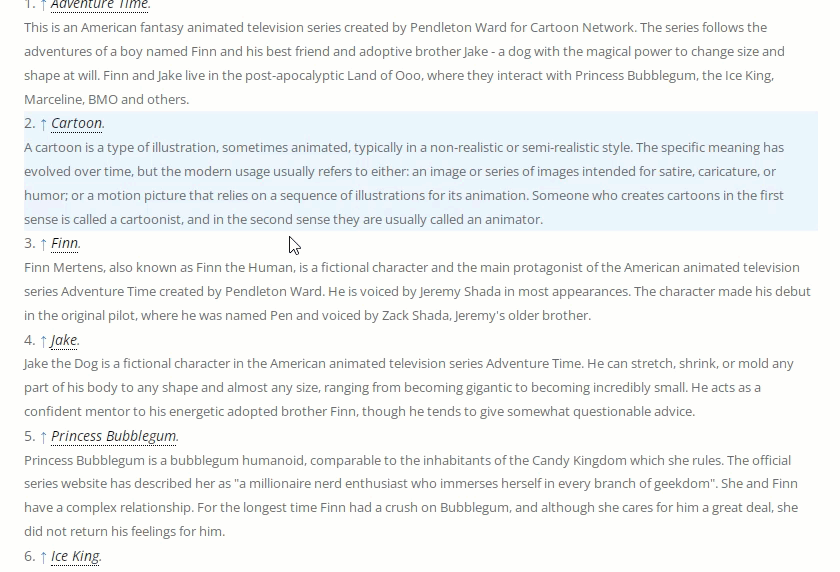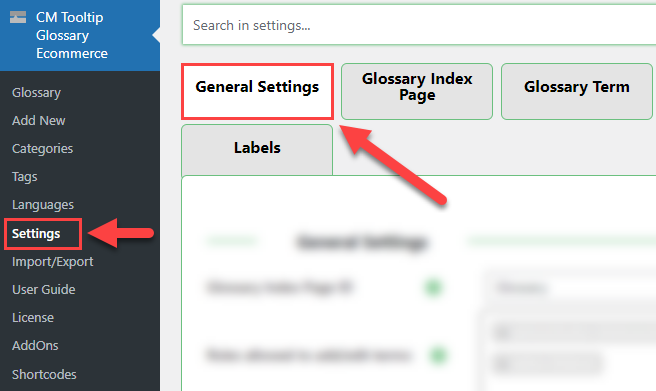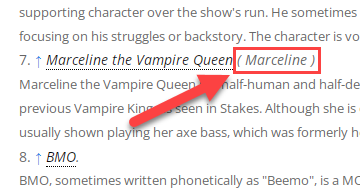WordPress Glossary Plugin (CMTG) - Use Case - How to Display Glossary Terms As Footnotes
Use Case – How to display glossary terms as footnotes
Note: This guide covers features from:
- WordPress Glossary plugin (Pro/Pro+/Ecommerce editions) - This document uses version 4.0.6.
Video Use-Case
Introduction
The WordPress Glossary plugin allows you to create a site with a complete glossary of terms. Each term's definition can appear on mouse hover across the whole site. It can also be displayed as footnotes. It means that some words/phrases in the post/page content will have a small link near them and the description at the end of the document.
Footnotes are often found in books and papers which use rare/old/specialist terms. They are a useful way to further explain these concepts in a later moment or to cite sources.
Use Case Front-End
Clicking on the footnote link scrolls down to the relevant term at the bottom of the page.

As it's set in plugin settings, by default only 3 terms are displayed. To see the full list of terms in the post, need to click the button Show more.

Clicking on the arrow next to the term brings the user back to the footnote in the post text.

Use Case Assumptions
In this example use case guide we will consider how to display glossary terms as footnotes on your WordPress site.
We consider that you have already bought the plugin, but not installed it yet.
It follows:
- Installing the plugin
- Quick recap
- Enabling footnotes mode
- More appearance settings
- Using synonyms
- End result
Installing the Plugin
The process is the same for all CM plugins and add-ons.

- Download the plugin from your customer dashboard.
- Log in to WordPress and navigate to the WordPress Admin → Plugins settings.
- Click on Add New.
- Activate it and add the license.
Learn more: Getting Started - Installation And First Steps
Quick Recap
In this use case we will cover only how to display glossary terms as footnotes. If you want learn more about how to configure the plugin and create your glossary, please, refer to this use case guide:
Enabling Footnotes Mode
To enable the footnotes, navigate to Admin Dashboard → CM Tooltip Glossary → Settings → General Settings tab.

Scroll down to the section Footnotes display settings. There you can find the following options:

Display terms as a footnotes - Enable it to highlight terms with footnote links that refer to the definition located on the bottom of the page under the main content. Important: If this option is enabled then tooltips will not be displayed.

Displaying terms as footnotes - Display style - Choose the style how the reference link will be displayed on the Front-End. You can choose between:
- Square brackets - [ ]
Curly brackets - { }

Examples of square and curly brackets
- Footnote link styles - Choose the styles for the link from where the term is found:
- Font size - Choose the font size for the footnote link. The value should be set in pixels, example: "15px".
- Color - Choose the font color for the footnote link.
- Style - Choose the font style for the footnote link. The options are:
- None
- Bold
Italic

Example of the footnote link style
Use excerpt for bottom definition - If enabled, then bottom footnote definition will display terms excerpt instead of full definition.
You can add an excerpt to each term on the page of editing the term in the metabox Excerpt:

Adding a term excerpt Strip HTML from the bottom footnote definition - If enabled, then bottom footnote definition will have all of its HTML removed, leaving just the plain text.
When the option is disabled:

Example with HTML formatting When the option is enabled:

Example without HTML formatting Footnotes definitions title - Choose the title for the footnote definitions section in the bottom block.

Footnotes definitions title - Maximum displayed footnotes - Set the number of footnotes that will be displayed by default. To see the full list of the bottom footnotes that the article contains, the user will have to click the button Show more. Default value is "5".
Footnotes definitions title - Here you can change the label of the button Show more.

Show more button
Let's configure the options as it's shown on the screenshot below:

When you finish configuring the options, click the button Save Changes at the bottom of the page.

More Appearance Settings
A few more options that can affect the appearance of the terms are located under the tab Glossary Term.

Head to the section Glossary Term - Links. Here you can:
- Define if to highlight a term as a link to the glossary term page and its behavior.
- Define the colors and underline style for terms.
Define if to display icons for terms and their style.

Glossary term links settings
Example

First Term Occurrence
One more useful option can be found in the General Settings tab, under the section Term highlighting. This is the option Highlight first term occurrence only - enable it if you don't want each term to be highlighted in the post every time it's found, but only the first time it appears.

And don't forget to click the button Save Changes after editing the settings.
Using Synonyms
If you use Synonyms for terms, then synonyms that are found in the same article before the base term will be written in brackets after the base term title.
Example

Learn more about adding synonyms to terms in this guide: Terms - Adding Synonyms
Now let's see the result on the front-end.
End Result
Following instructions found in the plugin and guides you should be able to display glossary terms as footnotes on your WordPress site.
Use Case Front-End
Clicking on the footnote link scrolls down to the relevant term at the bottom of the page.

As it's set in plugin settings, by default only 3 terms are displayed. To see the full list of terms in the post, need to click the button Show more.

Clicking on the arrow next to the term brings the user back to the footnote in the post text.

 |
More information about the WordPress Glossary Plugin Other WordPress products can be found at CreativeMinds WordPress Store |
 |
Let us know how we can Improve this Product Documentation Page To open a Support Ticket visit our support center |









